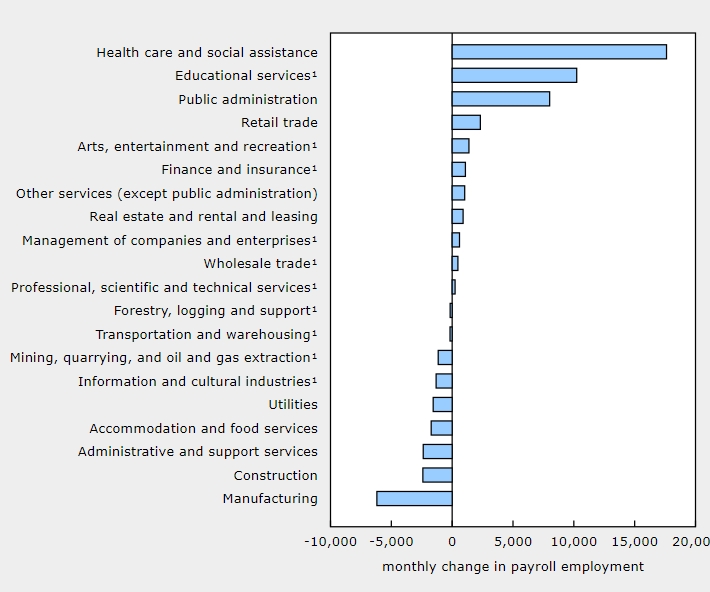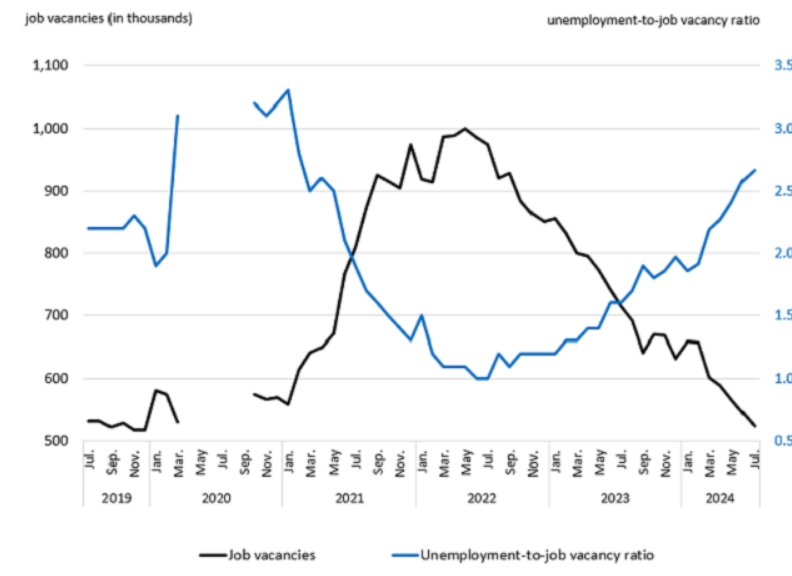
But average weekly earnings rise on monthly, annual basis

Payroll employment in Canada grew by 32,800 in July, after June saw a dip with the loss of 22,900 jobs, according to data from the Survey of Employment, Payrolls, and Hours.
On a year-over-year basis, employment increased by 157,800. However, job vacancies continue to decline, with 22,400 fewer vacancies in July, bringing the total to 526,900 open positions, says Statistics Canada.
Since May 2022, job vacancies have fallen nearly 50% from their peak of over 1 million unfilled positions, which suggests a cooling demand for labour.
A piece of good news is average weekly earnings in Canada increased by 1.0% in July, bringing the national average to $1,268. On a year-over-year basis, wages rose by 4.5%, reflecting both changes in wage rates and variations in hours worked.
Five of the 20 tracked sectors saw increases in payroll employment in July, with health care and social assistance at the top, as the sector added 17,600 jobs. Since September 2022, the healthcare sector has seen a cumulative rise of 176,600 jobs, driven by general medical and surgical hospitals, child daycare services, and nursing care facilities.
Public administration also saw a strong performance as it added 8,000 jobs in July thanks to gains at the local, provincial, and federal levels. On a year-over-year basis, the sector has expanded by 39,900 jobs, finds Statistics Canada.
Retail trade recorded an increase of 2,300 jobs despite the sector being on a downward trend. Since February 2023, retail payroll employment has fallen by 33,400 jobs.
On the other side, manufacturing lost 6,200 jobs in July, marking its second straight month of decline. Manufacturing saw payroll drops in nine out of 21 subsectors, led by food manufacturing and plastics and rubber products manufacturing.
Construction also saw its second consecutive month of losses, with 2,400 jobs shed. These losses were primarily in heavy and civil engineering and non-residential construction.
Moreover, job vacancies fell for the third month in a row, with decreases in six sectors, including transportation and warehousing (-8,100), accommodation and food services (-6,500), and manufacturing (-5,800). Manufacturing now stands at its lowest point since 2016, says Statistics Canada.
The job vacancy rate dropped to 3.0% in July, down from 4.0% a year earlier. Meanwhile, the ratio of unemployed persons to job vacancies rose to 2.7 in July, indicating a higher availability of workers relative to open positions.